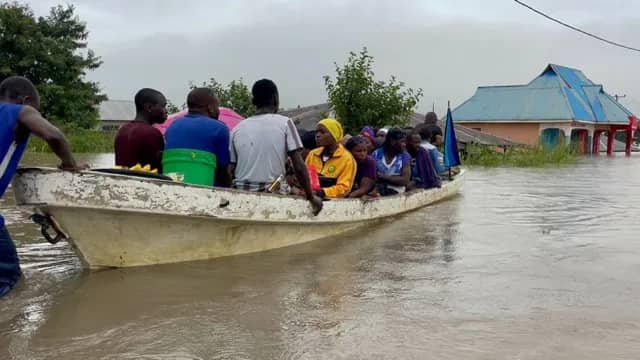The Prime Minister of Tanzania Kassim Majaliwa has said about 155 people have died in floods and landslides in Tanzania following heavy rains caused by El Niño.
Majaliwa warned that the rains might continue into May, and urged families to leave flood-prone areas.
About 200,000 people and more than 51,000 households were already affected by the disaster, he added.
Heavy rains have also swept through neighbouring Kenya and Burundi, causing a humanitarian crisis in the region.
Giving a report to Tanzania’s parliament on the situation in his country since January, Mr Majaliwa said that in addition to the 155 people killed, 236 had been injured.
“The heavy El Nino rains, accompanied by strong winds, floods, and landslides in various parts of the country, have caused significant damage.
“These include loss of life, destruction of crops, homes, citizens’ property, and infrastructure such as roads, bridges, and railways,” he added.
A resident in northern Tanzania’s Siha district told the BBC that his home had been destroyed.
“I have nothing left, everything has been wiped away,” he said.
In Kenya, President William Ruto has ordered the army to help with rescue operations, as heavy rains pounded large parts of the country, including the capital, Nairobi, where homes in some slum areas have been swept away, along with furniture and other goods.
More than 10 have died in Kenya this week, bringing the death to at least 45 people since March, the Red Cross said.
In Burundi, heavy rains have displaced nearly 100,000 people.
BBC Weather’s Chris Fawkes said that one of the biggest drivers of the rains is the Indian Ocean Dipole (IOD).
The IOD – often called the “Indian Niño” because of its similarity to its Pacific equivalent – refers to the difference in sea-surface temperatures in opposite parts of the Indian Ocean.
During a positive phase, the waters in the western Indian Ocean are much warmer than normal and this can bring heavier rain regardless of El Niño.
However, when both a positive IOD and an El Niño occur at the same time, as was the case last year, the rains in East Africa can become extreme.










